
The Irish Civil War was a conflict that followed the Irish War of Independence and accompanied the establishment of the Irish Free State, an entity independent from the United Kingdom but within the British Empire.
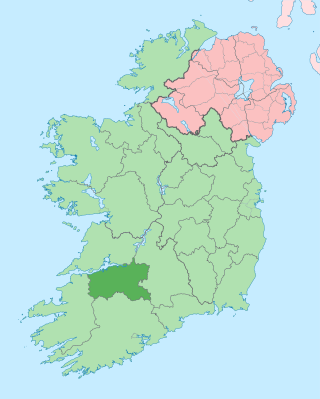
County Limerick is a western county in Ireland. It is in the province of Munster and is located in the Mid-West which comprises part of the Southern Region. It is named after the city of Limerick. Limerick City and County Council is the local council for the county. The county's population at the 2022 census was 209,536 of whom 102,287 lived in Limerick City, the county capital.

Kilmallock is a town in south County Limerick, Ireland, near the border with County Cork, 30 km south of Limerick city. There is a Dominican Priory in the town and King's Castle. The remains of medieval walls which encircled the settlement are still visible.
Events from the year 1922 in Ireland.
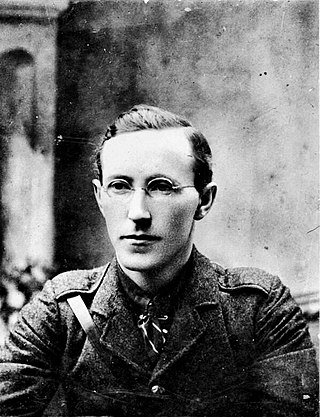
William Fanaghan Lynch was an Irish Republican Army officer during the Irish War of Independence of 1919–1921. During much of the Irish Civil War, he was chief of staff of the Irish Republican Army. On 10 April 1923, Lynch was killed whilst trying to escape an encirclement by Free State troops in south Tipperary.

The River Maigue rises in the Milford area of north County Cork, Ireland. The River Maigue is 38.75 miles (62.36 km) long. It drains an area of 1,000 square kilometres (390 sq mi)

The Irish Republican Army (IRA) of 1922–1969, an anti-Treaty sub-group of the original Irish Republican Army (1919–1922), fought against the British-backed Irish Free State in the Irish Civil War, and its successors up to 1969, when the IRA split again into the Provisional IRA and Official IRA. The original Irish Republican Army fought a guerrilla war against British rule in Ireland in the Irish War of Independence between 1919 and 1921. Following the signing of the Anglo-Irish Treaty on 6 December 1921, the IRA in the 26 counties that were to become the Irish Free State split between supporters and opponents of the Treaty. The anti-Treatyites, sometimes referred to by Free State forces as "Irregulars", continued to use the name "Irish Republican Army" (IRA) or in Irish Óglaigh na hÉireann, as did the organisation in Northern Ireland which originally supported the pro-Treaty side. Óglaigh na hÉireann was also adopted as the name of the pro-Treaty National Army, and remains the official legal title of the Irish Defence Forces.
The Munster Republic was an informal and colloquial term used by Irish republicans to refer to the territory they held in the province of Munster at the start of the Irish Civil War. The "republic" never claimed to be a state as such, but was a base for the republican civil war aim of creating an all-Ireland Irish Republic.
Liam Deasy was an Irish Republican Army officer who fought in the Irish War of Independence and the Irish Civil War. In the latter conflict, he was second-in-command of the Anti-Treaty forces for a period in late 1922 and early 1923. Before the anti-treaty and pro-treaty split, he was considered closely associated with Michael Collins
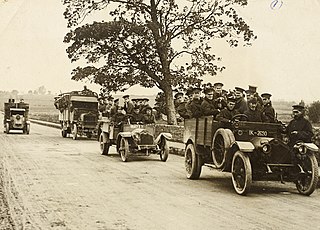
This is a timeline of the Irish War of Independence of 1919–21. The Irish War of Independence was a guerrilla conflict and most of the fighting was conducted on a small scale by the standards of conventional warfare.
The Irish Republican Army was a guerrilla army that fought the Irish War of Independence against Britain from 1919 to 1921. It saw itself as the legitimate army of the Irish Republic declared in 1919. The Anglo-Irish Treaty, which ended this conflict, was a compromise which abolished the Irish Republic, but created the self-governing Irish Free State, within the British Empire. The IRA was deeply split over whether to accept the Treaty. Some accepted, whereas some rejected not only the Treaty but also the civilian authorities who had accepted it. This attitude eventually led to the outbreak of the Irish Civil War in late June 1922 between pro- and anti-Treaty factions.
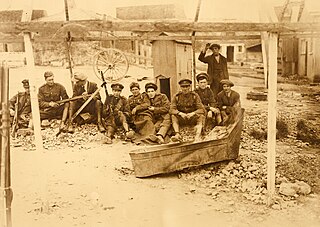
The Irish Free State offensive of July–September 1922 was the decisive military stroke of the Irish Civil War. It was carried out by the National Army of the newly created Irish Free State against anti-treaty strongholds in the south and southwest of Ireland.

The Battle of Dublin was a week of street battles in Dublin from 28 June to 5 July 1922 that marked the beginning of the Irish Civil War. Six months after the Anglo-Irish Treaty ended the recent Irish War of Independence, it was fought between the forces of the new Provisional Government and a section of the Irish Republican Army (IRA) that opposed the Treaty.
This is a timeline of the Irish Civil War, which took place between June 1922 and May 1923. It followed the Irish War of Independence (1919–1921), and accompanied the establishment of the Irish Free State as an entity independent from the United Kingdom of Great Britain and Ireland.
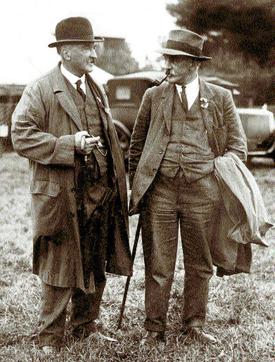
Thomas William Westropp Bennett was an Irish politician, magistrate and public figure in Irish agriculture.

The guerrilla phase of the Irish Civil War began in August 1922, when the forces of the Irish Free State took all the fixed positions previously held by the Anti-Treaty IRA. The IRA then waged a guerrilla war to try to bring down the new Irish Government and overturn the Anglo-Irish Treaty. This guerrilla campaign was ultimately defeated.

Rochestown is a primarily residential area in Cork City, Ireland. Originally a somewhat rural area in County Cork, housing developments in the 20th and 21st centuries have connected the area to Douglas and nearby suburbs. The area was formally incorporated into Cork City following the 2019 Cork boundary change on 31 May 2019, along with the surrounding areas of Douglas, Grange and Frankfield. The R610 trunk road passes through the area, linking Rochestown and other villages in lower Cork Harbour, to the city centre. Rochestown Road also links Douglas with the N40 South Ring Road.

The National Army, sometimes unofficially referred to as the Free State army or the Regulars, was the army of the Irish Free State from January 1922 until October 1924. Its role in this period was defined by its service in the Irish Civil War, in defence of the institutions established by the Anglo-Irish Treaty. Michael Collins was the army's first commander-in-chief until his death in August 1922.
The siege of Dublin took place in 1649 during the Irish Confederate Wars. It was a failed attempt by combined Irish Royalist and Confederate forces to capture the capital of Dublin which was held by English Republican forces under Michael Jones. It was part of a strategy by Duke of Ormonde, head of an alliance loyal to Charles II, to seize the remaining foothold of Ireland still under the control of the London Parliament.

The Irish soviets were a series of self-declared soviets that formed in Ireland during the revolutionary period of the Irish War of Independence and the Irish Civil War, mainly in the province of Munster. "Soviet" in this context refers to a council of workers who control their place of work, not a Soviet state.















